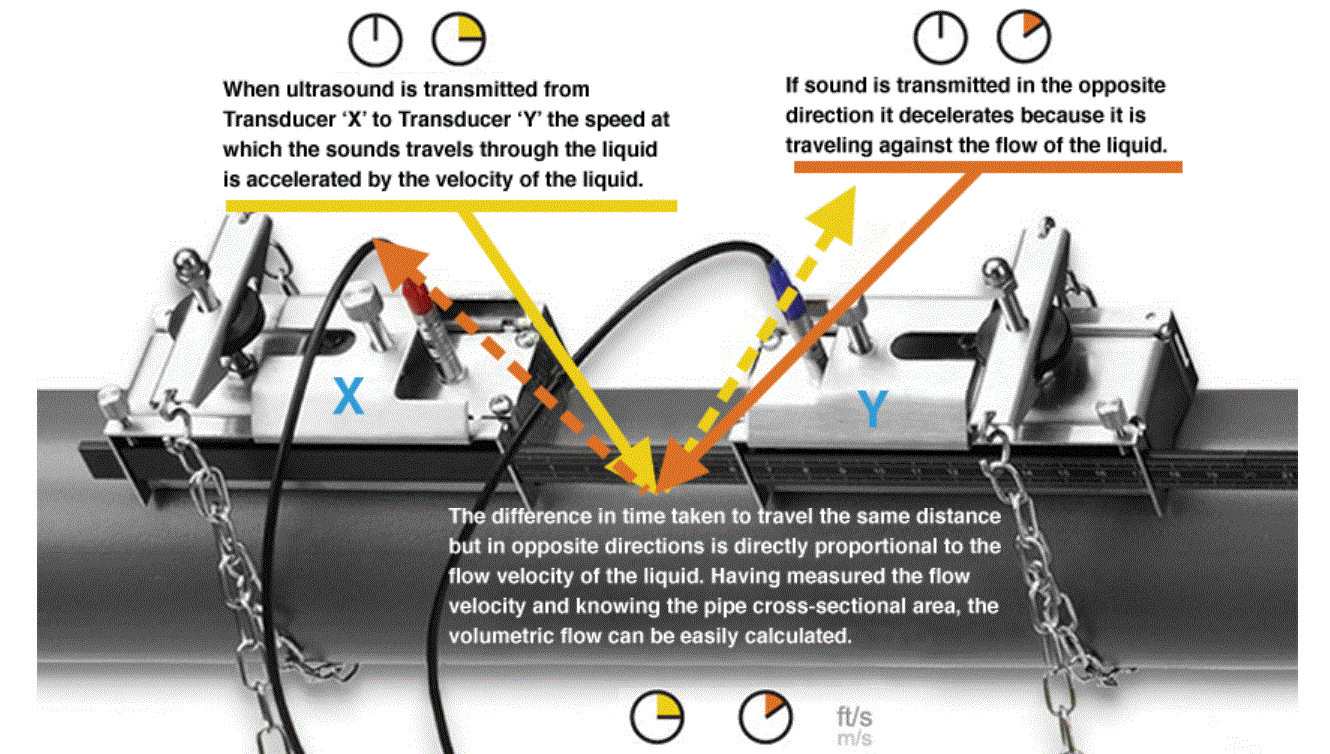Clamp on ultrasonic flow meters
There are two basic technologies; transit time and doppler. There are some similarities between clamp on ultrasonic flow meters and Doppler meters. There are also some very important differences between clamp on ultrasonic flow meters and Doppler meters. Clamp on ultrasonic flow meters and Doppler meters are designed for different applications and different media. Let’s first look at clamp on flow ultrasonic flow meters, aka, transit time measurement principal. Transit time meters go by several different names such as; clamp on flow meter, clamp on ultrasonic flow meter, strap on meter, and clamp on ultrasonic water flow meter. Regardless of the name, transit time meters will always consist of two transducers communicating with each other. The ultrasonic signal transmitted from transducer X to transducer Y traveling with the flow, is accelerated. In the opposite direction, from transducer Y to transducer X, and traveling against the flow, the speed at which the signal is carried is decelerated. The difference in time to travel the same distance between the two signals measures the fluid’s velocity.

Once the velocity is measured, the volumetric flow is calculated using the inner diameter of the pipe. For a visual description of how transit time meters work. Transit time technology works best when the pipe is full, and the fluid is free of debris and bubbles.
Clamp on Doppler meters
Doppler technology is different in that it typically utilizes a single sensor head. The Doppler meter sensor head has both a signal generating and signal listening sensor in it. A Doppler meter relies on the reflection of the sound wave being produced. If there is flow, the sound wave is doppler shifted. An increase or decrease in the frequency is generated when there is flow. The rate of change in the frequency creates a velocity measurement. Similarly to transit time meters, the volumetric flow is calculated from the internal diameter of the pipe using the velocity measurement. Doppler meters work best with aerated or dirty liquids for the sound wave to bounce off of.
Still Unsure?
We’ve created a short and simple questionnaire to guide you to the best clamp on flow meter we can offer for your specific application.
